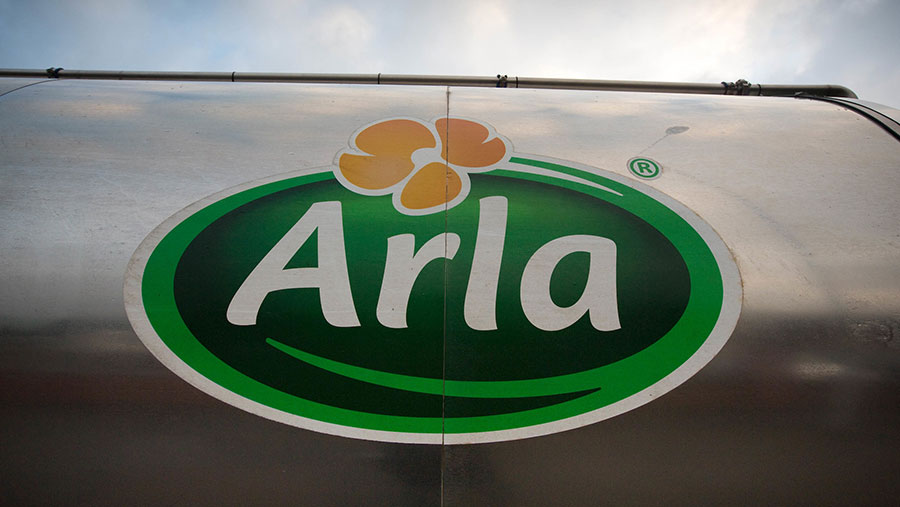Arla breaks 30p/litre barrier with milk price rise
 © Tim Scrivener
© Tim Scrivener Dairy co-op Arla has increased its conventional milk price by two euro cents, equivalent to 1.92p/litre for manufacturing litres from 1 July.
The rise takes the price paid to the co-op’s 2,400 UK producers to 30.5p/litre for litres with a constituent content of 4.2% butterfat and 3.4% protein.
See also: Where are milk prices headed in rising dairy markets?
For ease of comparison, the rise equates to a 1.8p/litre price injection for liquid litres with a constituent content of 4% fat and 3.3% protein, taking July’s price to 29.31p/litre.
Arla cited lower than anticipated European milk production a result of adverse weather in the spring coupled with strong demand, particularly from Asia driving stronger dairy commodity prices.
“I am confident this will be welcome news to our farmer owners, who have been experiencing challenging weather conditions, which have dampened milk volumes from farm,” said Arla Foods amba board director, Johnnie Russell.
Mr Russell added: “I am pleased to say that the overall outlook for the coming months remains positive.”
This week also saw the processor announce it would see a change of leadership at the top of the UK arm of the business.
UK managing director Tomas Pietrangeli announced on Tuesday (19 June) he would be leaving the business to be replaced by senior vice-president of sales for Arla Foods UK, Ash Amirahmadi – a figure believed to be popular among the company’s UK-based farmer owners.
Expert analysis: Peter Meehan, INTL FC Stone
The recent strength in European dairy commodity prices has ground to somewhat of a halt over the past few weeks.
Improved milk collections and an apparent softening of demand saw spot butter prices fall 1.5% over the past two weeks.
Spot skim-milk powder (SMP) prices also stagnated over the past week amid fears of international trade wars, steady supplies and strong stocks weighing on market sentiment.
On the supply side, lower milk collections in April for the UK, France, the Netherlands and Ireland were more than offset by strong increases for Germany, Italy and Poland.
Further to this, New Zealand and US milk collections for May also showed strong numbers.
On the demand-side, EU dairy exports were somewhat muted in April with cheese exports seeing their lowest April since 2015, while butter exports were also lower.
SMP exports meanwhile remained reasonably strong. The Global Dairy Trade auction in New Zealand was also lower this week, down 1.2% posting its seventh negative event in nine.
The past two weeks have also seen EEX butter and SMP futures’ prices ease, with butter futures down 5.7% on average since the start of June, driven by the same fundamentals that are leading the spot market lower.
